Today is Epifania or Epiphany in English. I looked this up…”On January 6 the Catholic Church celebrates the solemnity of the Epiphany. This religious feast brings a fulfillment of all the purposes of Advent. Epiphany, therefore, marks the end of the Advent-Christmas season. Three mysteries are encompassed in this solemnity: the adoration of the Christ Child by the Magi, the Baptism of Christ and the wedding feast at Cana. Epiphany is also known as Three Kings’ Day, in other branches of Christianity. A Christian feast day that celebrates the revelation of God in his Son as human in Jesus Christ. In Western Christianity, the feast commemorates principally the visit of the Magi to the Christ child, and thus Jesus’ physical manifestation to the Gentiles.”
Here in Umbertide we also celebrate Befana, the Christmas witch. Amusingly, she arrives in an Ape, a three wheel truck-type vehicle. She distributes candy! I took her photo and she gave me candy! I must have been good this year. Here she is!
In Italian folklore she is thought to have originated in central Italy near where we live. Befana is an old woman who delivers gifts to children throughout Italy on Epiphany Eve (the night of January 5) in a similar way to St Nicholas or Santa Claus. Since before Babbo Natale arrived on the scene, Italian children have been celebrating the annual visit of La Befana.
Befana is said to visit all the children of Italy on the eve of the Feast of the Epiphany to fill their socks with candy and presents if they are good, or a lump of coal or dark candy if they are bad. The child’s family typically leaves a small glass of wine and a plate with a few morsels of food, often regional or local, for the Befana. She is usually portrayed as a hag riding a broomstick through the air wearing a black shawl and is covered in soot because she enters the children’s houses through the chimney.
According to legend Befana was approached by the biblical magi, also known as the Three Wise Men (or the three kings) a few days before the birth of the Infant Jesus. They asked for directions to where the Christ child was, as they had seen his star in the sky, but she did not know. She provided them with shelter for a night. The magi invited her to join them on the journey to find the baby Jesus, but she said no, that she was too busy with her housework and sweeping up. Later, la Befana had a change of heart, and she tried to search out the location of the baby Jesus. That night she was not able to find them, so forever after, la Befana has been flying over the grapevines and olive trees searching for the little baby and leaving children candy in hopes the Christ child is there.
There are many different versions of this legend to this day, some darker than the above. One tells that la Befana was mother to a child that died, and she went mad with grief. When Jesus was born, she sought him out. She thought that he was her child. She eventually met Jesus and presented him with gifts to make him happy. The infant Jesus was delighted, and he gave la Befana a gift in return; she would be the mother of every child in Italy.
Now la Befana is celebrated throughout all of Italy, and she has become a national icon. In the regions of the Marches, Umbria and Latium, her figure is associated with the Papal States, where the Epiphany held the most importance.
You can find images of la Befana all through Italy. She is not romanticized, she is an ugly hag with missing teeth and a torn dress holding a broom with a crazy grin on her face. I guess Italians don’t want to make their hag a prettier, more acceptable figure. They like her just as she is. A very Italian attitude!
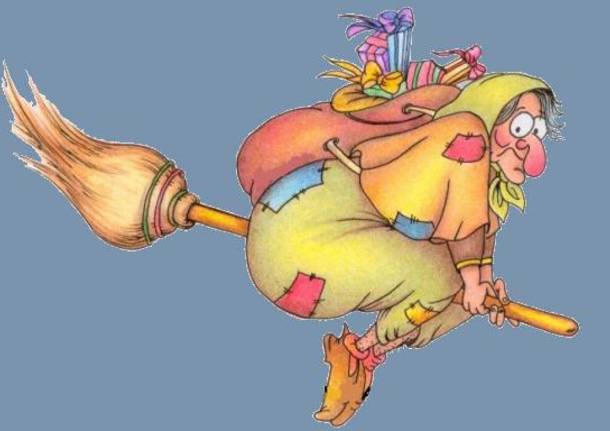
And the Italian children love playing the la Befana game. The words of this song vary in different areas, but what I read is that children gather in a seated circle with a shoe behind each of them. The designated witch walks behind them while the children sing:
Viene, viene la Befana
Vien dai monti a notte fonda
Come è stanca! la circonda
Neve e gelo e tramontana!
Viene, viene la Befana
The English translation is:
Here comes, here comes the Befana
She comes from the mountains in the deep of the night
Look how tired she is! All wrapped up
In snow and frost and the north wind!
Here comes, here comes the Befana!
Prettier in Italian!
Once the song is over, all the children open their eyes, and check their shoes. Whoever finds the candy that the “Befana” has hidden there wins!
I hope my friend Michelle Damaini of il Bel Centro won’t mind my quoting her here…she wrote, “Because I love celebrating La Befana. Not just for the very Italian-ness that connects me back to the curling fog and hastening twilight of January in Spello. No, you see La Befana as a reminder. A reminder to stop sweeping, look up, and listen. Magic is all around, we just need to be open to it. We just need to listen.” Nice…
~~~~~~~~~~~~~~~~~~~~~~~~~
Yesterday it snowed…
Just to document it, we had snow squalls here yesterday. South and east of us they actually got a lot of snow. Here it is very cold and blue skies today. See our snow squalls…
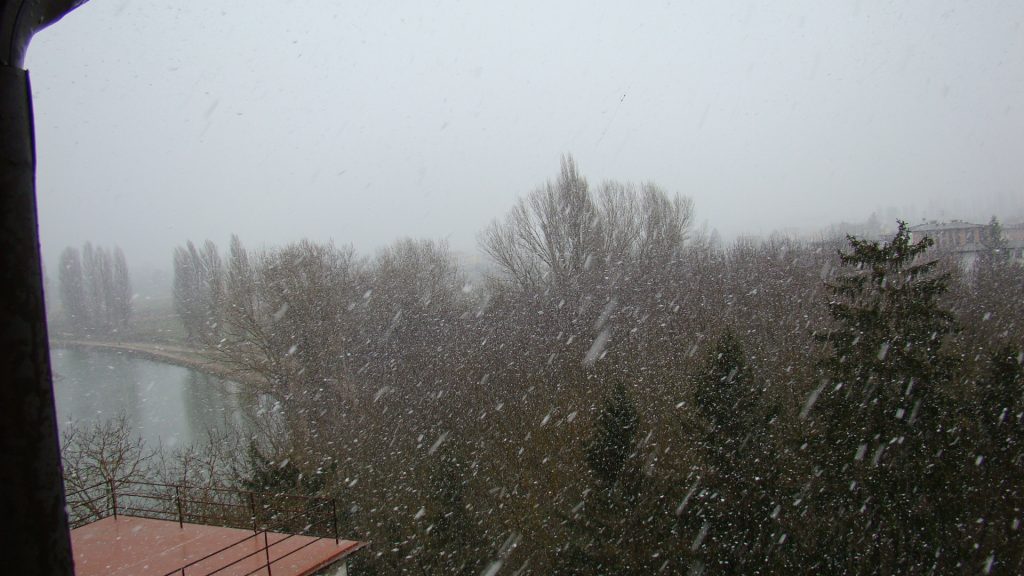

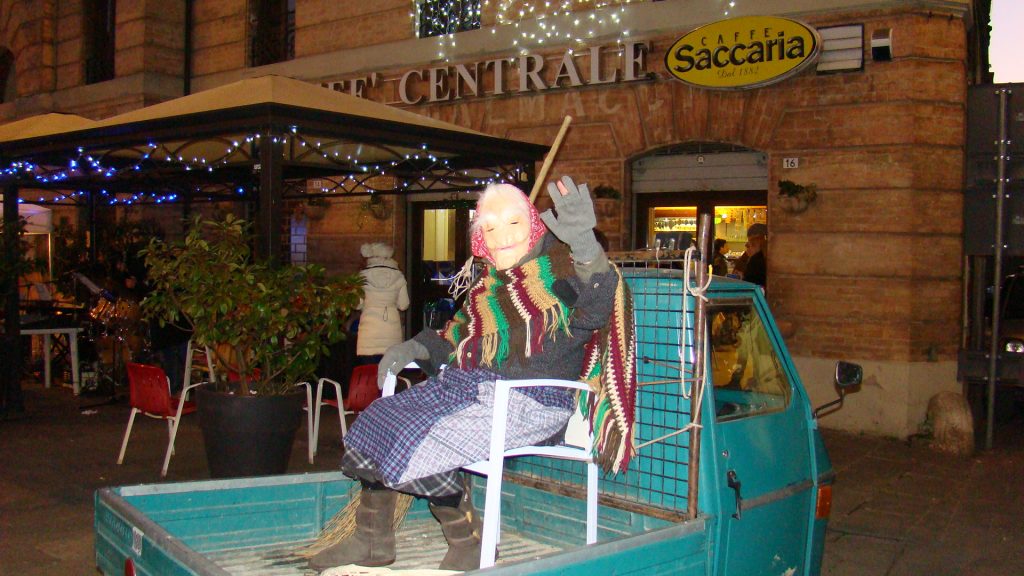
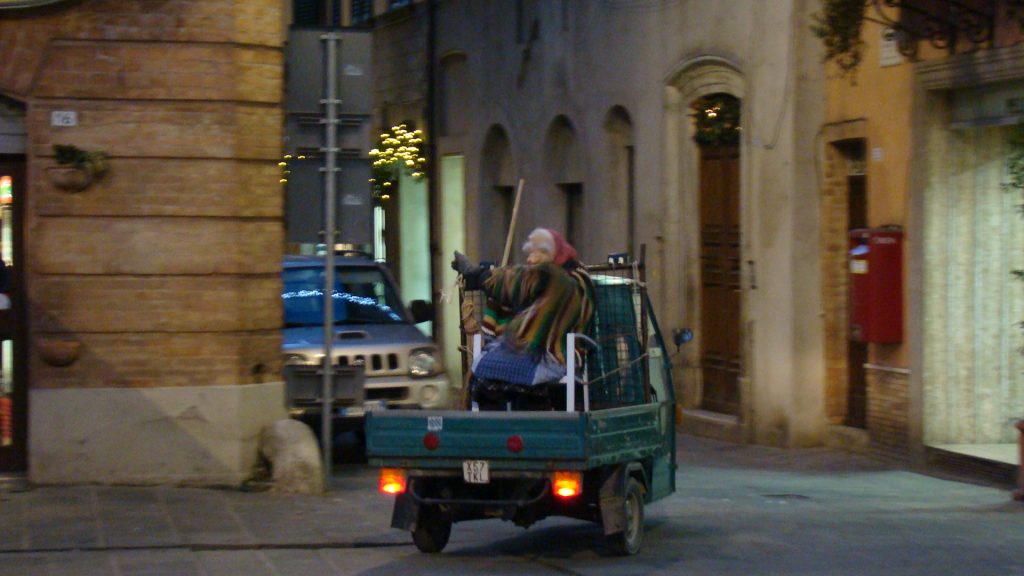
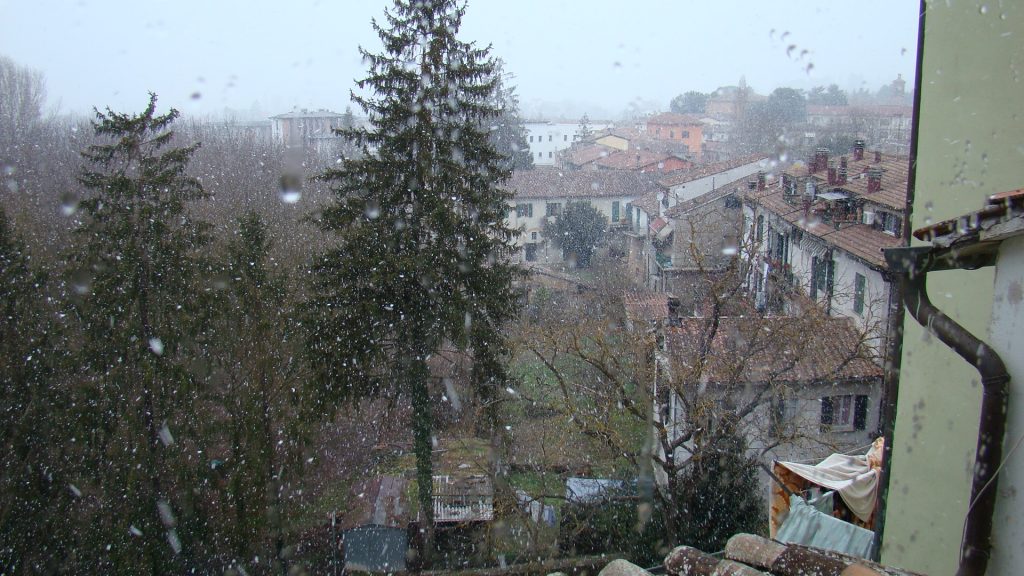
Hi Dee, don’t you love these old legends and traditions? I don’t tire of learning all about them. Happy Christmas to you and your family tomorrow!
This Italian legend is wonderful. I am of Serbian heritage and we celebrate Christmas on January 7. My grandparents brought their Serbian Orthodox heritage and religion to USA in 1910. We celebrated both Christmas es. I will pass your Italian witches on to my friend. God bless you all.
Oh how lovely Elisa. It is so nice to pass along our traditions. I’m glad your children will also do so. I love the story of Befana. It is quite sad, is t it? We had a band of witches roaming our neighborhood this year. Buon anno!
Thank you for this beautiful reminder of my culture, my origin, my heritage
As a small child in America from New immigrant parents, I did not speak English; and while all the other children received their stockings on Christmas, we hung ours on the eve of the Epifania. I practiced this tradition with my children and now that they.may be parents, they said they will carry on our Italian tradition of La Befana.